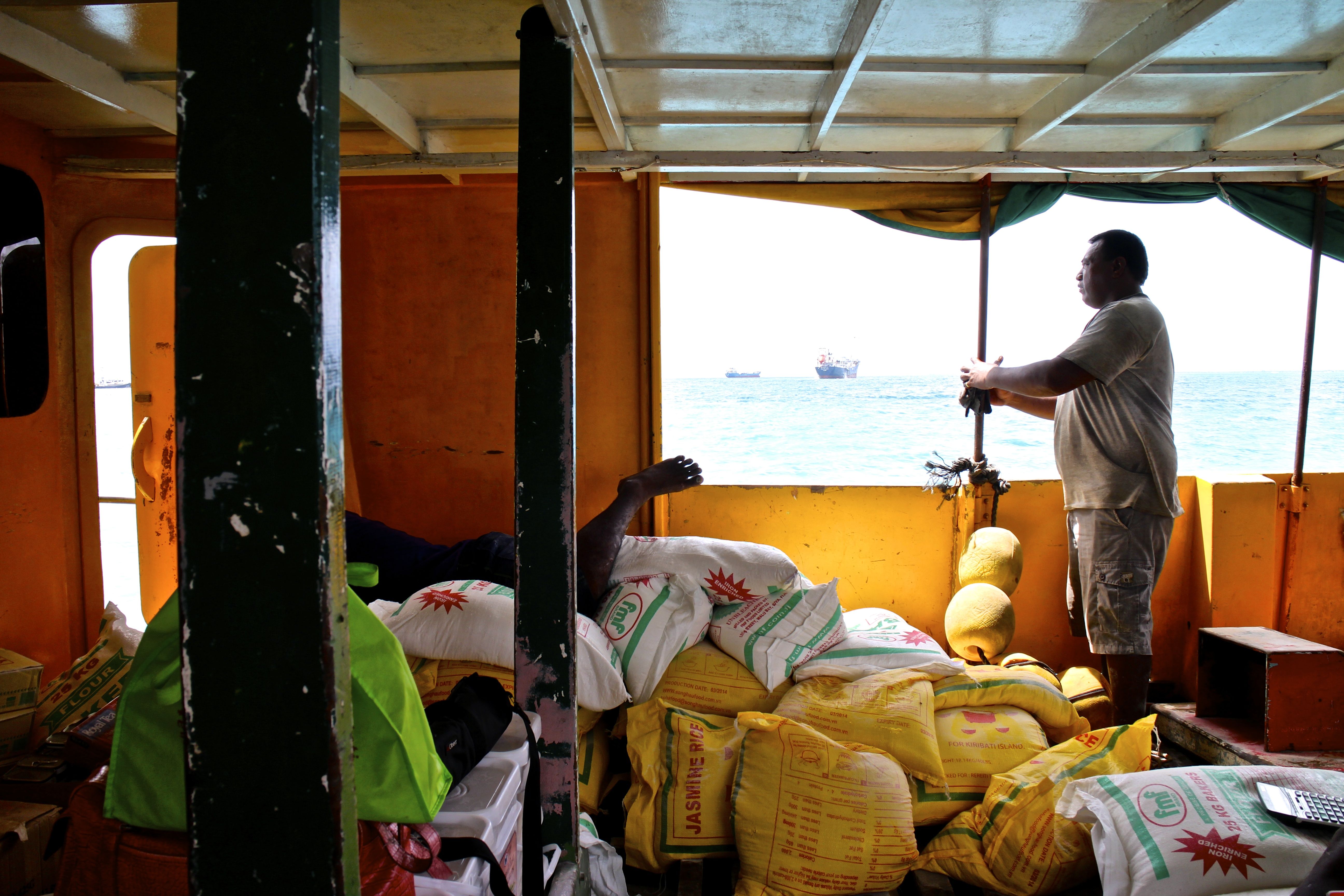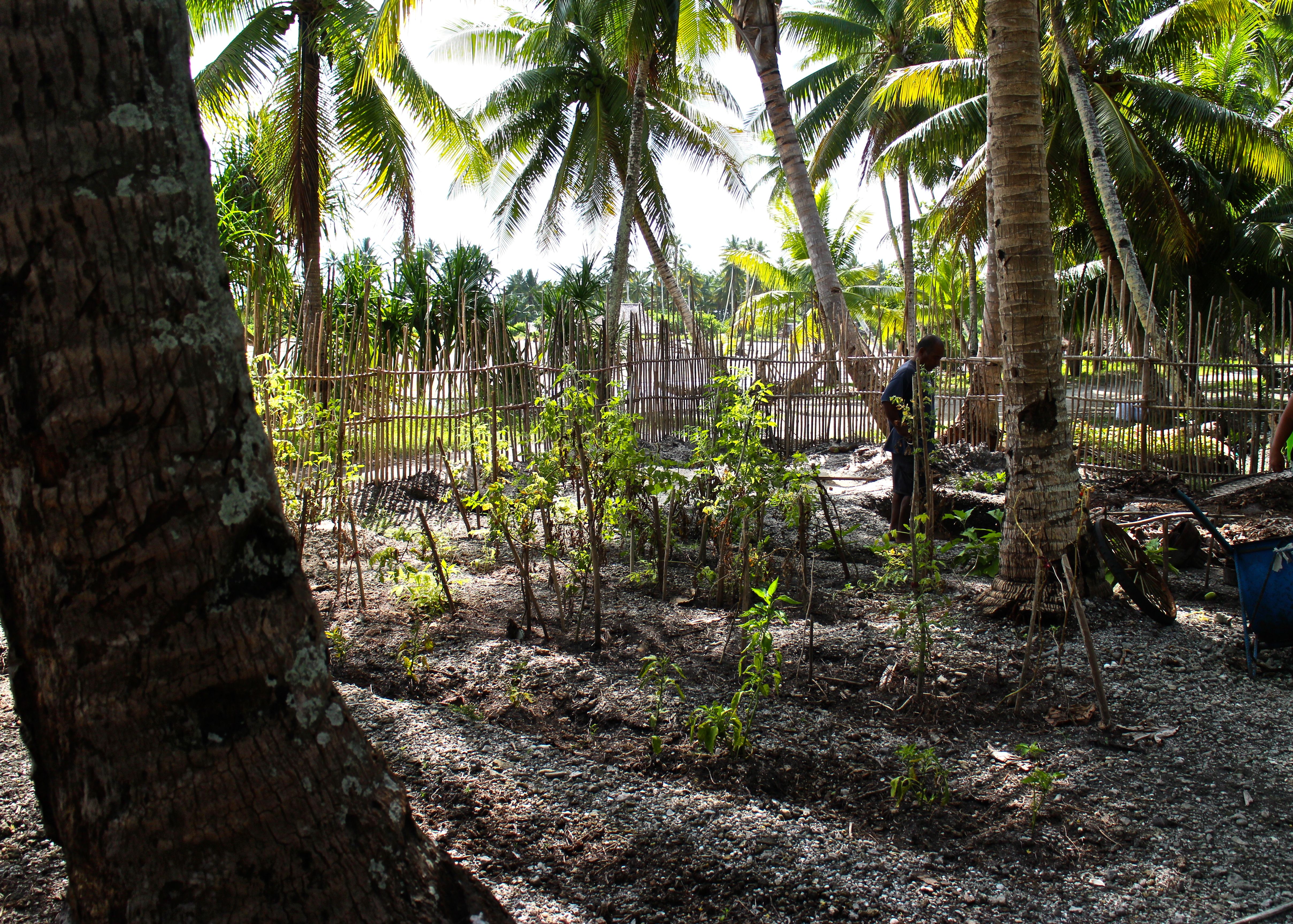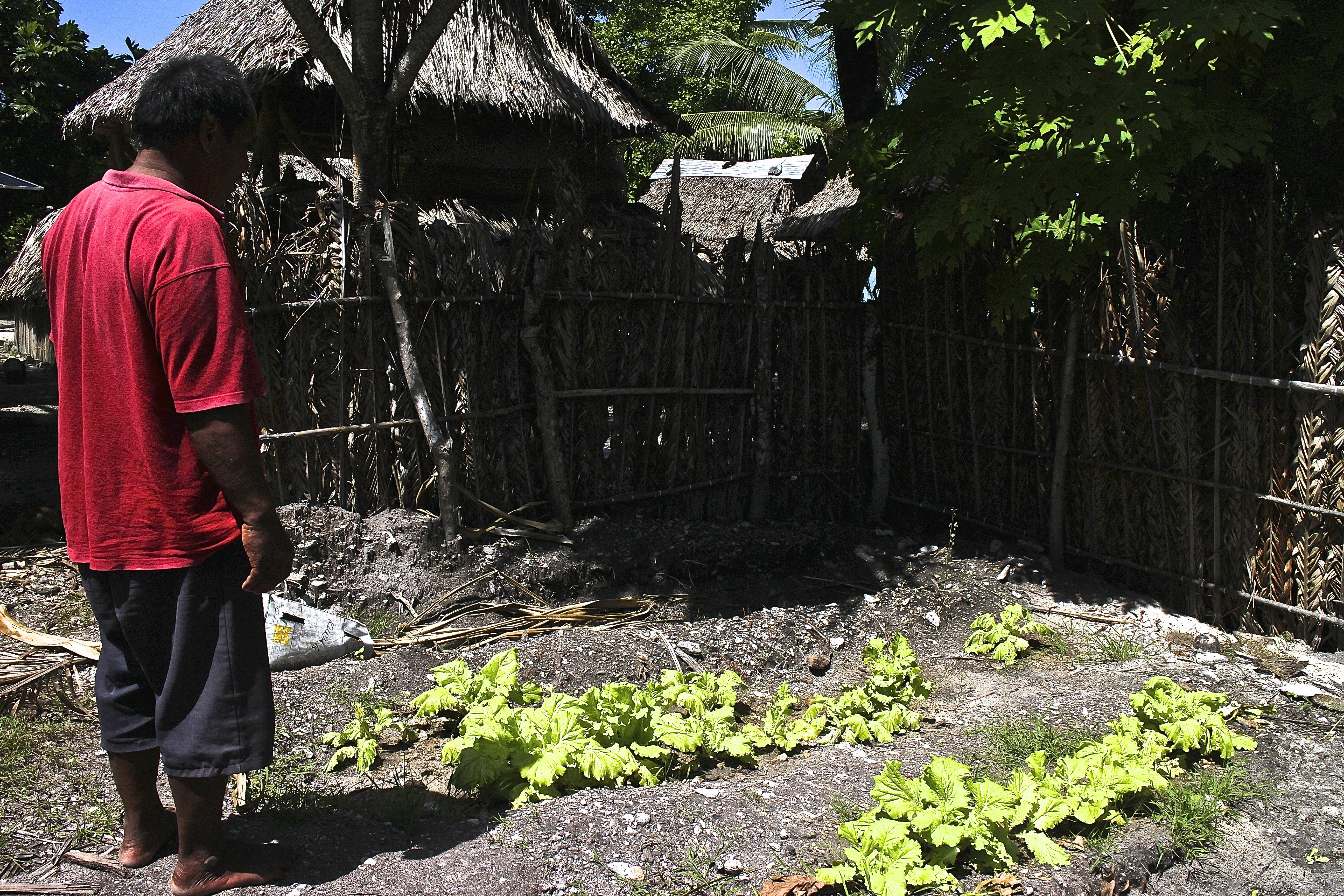Tebunginako Village, Abaiang Island, Kiribati—After a king tide washed up his community’s garden earlier this year, Batika Tominiko, a 67-year-old village elder, decided to donate 1.5 acres of his land for a new garden. Tominiko hopes that his land will be a source of food for the entire community, and that eventually the extra produce will bring in much-needed funds for the village.
“I gave the land because it’s good for the community as a financial support. It’s the biggest land here so the village can benefit from it, because if we plant enough there, the money from the crops would come straight to the community fund for whatever the community need is,” Tominiko said. “It would be like a reserve bank for the community to depend on in case there is a need.”
Kiribati is a small island nation consisting of 32 coral atolls and one phosphate island in the South Pacific, located about halfway between Hawaii and Fiji. Kiribati is one of the lowest-lying island nations in the world, with an average elevation of less than 3 meters above sea level.
Because of the low elevation, the islands are especially vulnerable to any changes in sea level and tidal patterns. The sea is most destructive in Kiribati during the king tides, unusually high tides that occur two times a year, once during the winter months and again in the summer. It was during one of these severe tides that Tebunginako’s community learning farm was washed away.
Community and household gardens are helping families adapt to these changes by providing crops like sweet potato, cassava, and vegetables that can be harvested within three to four months. The shorter growing season makes it easier for villagers to move their gardens inland if the tide comes up higher, but often the high tides and severe storms come unannounced.
“In the beginning of this year with the king tide, it washed up the gardens and the community farm. We moved it further in, away from the coast, but we were not prepared for that,” said Otimoa Kabunare, 55, another village elder in Tebunginako village.
The community farm began in the fall of 2013 as a climate-change adaptation program sponsored by Live and Learn, a non-profit organization based in the Asia-Pacific region. The garden serves as a place for villagers to gain hands-on skills related to composting, planting, and harvesting for home gardens. In addition to short-term crops, the Live and Learn project planted coconut, breadfruit, fig, and pandanus trees further inland to ensure food security in future years as the tide continues to rise.
In the outer villages of Kiribati, families live a subsistence lifestyle centered on fishing, and they supplement their diet with food from the land including breadfruit, taro, and coconut. The rising sea level, an increasing population, and the influence of western imports have caused many families to rely on imported food—mostly white flour, rice, and noodles.
“Thirty to forty years ago there was plenty of food for the family. We had small families then too. Now there is less and less food—especially local food, like the bwaibwai [taro] and the breadfruit. It is very hard now for parents to feed their children, especially with the local foods,” said Toma Mote, 51, chairman of the Agriculture Committee for neighboring Ewena Village.
Mote started a competition in his community to encourage villagers to start planting home gardens. He is excited to teach villagers about planting and has set up his own garden to serve as a model for Ewena.
“We need something to eat rather than depending on the imported rice and flour. So we make a big effort to go from house to house to have people start planting. More than half of the village—they do the planting now,” he said.
Though his competition has been successful, Mote is still concerned as the salty well water is affecting the soil and decreasing the harvests.





